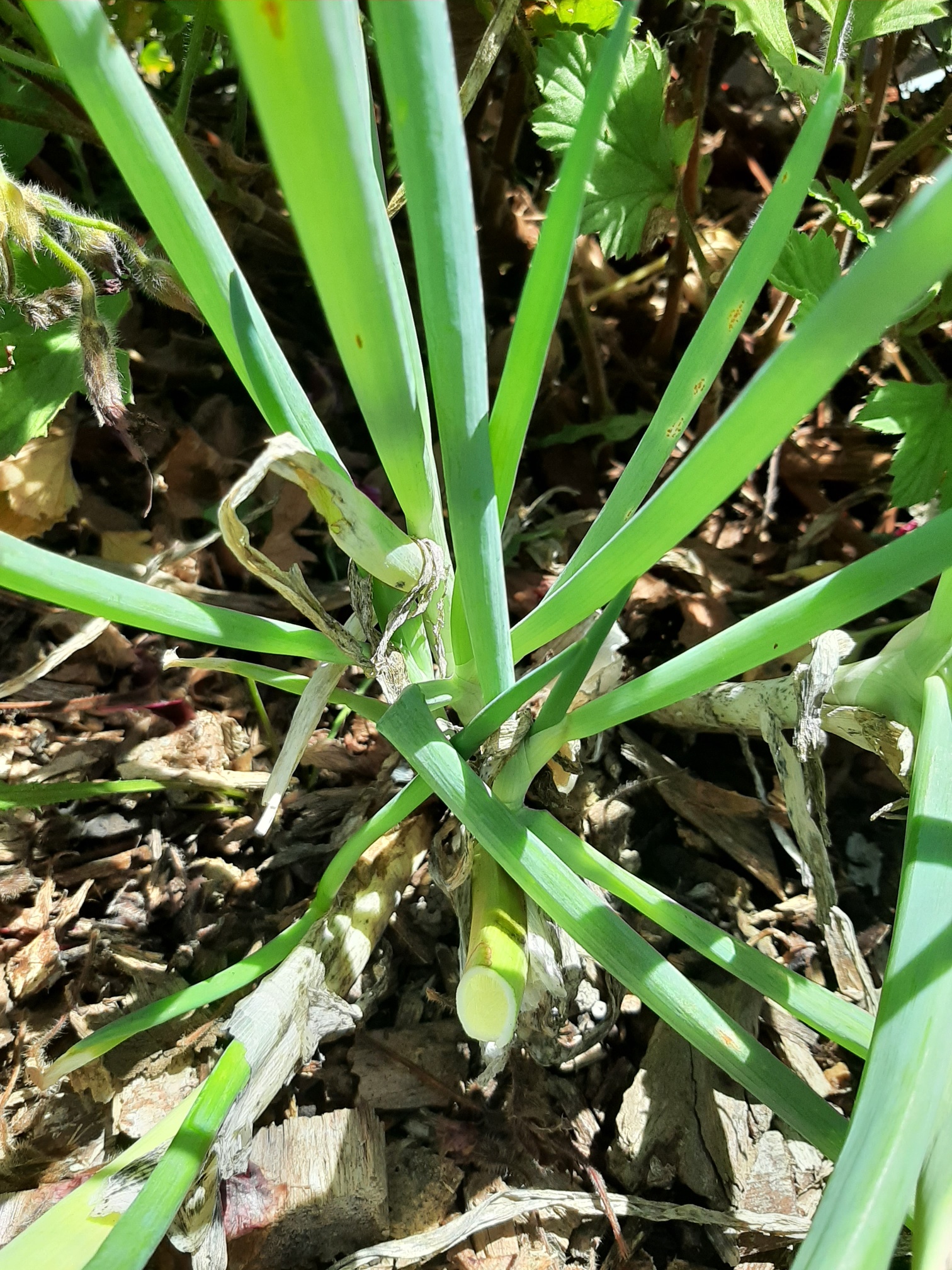What are bunching onions?
These onions are similar to a spring onion and are known as Welsh bunching or Japanese bunching onions. ‘Welsh’ apparently has nothing to do with Wales and is more common in Asian cuisine according to Wikipedia.
- The botanical name is Allium fistulosum
- These are a perennial vegetable which means they don’t need to be constantly replanted by sowing seeds or planting out new seedlings.
- The stalks continuously grow from the base of the plant. Treat as a cut and come again plant – cut the stalks for harvest as needed rather than cutting down the whole plant.
- The leaves are hollow and contain a little mucilage (gooey stuff!).
- The taste is of course onion-ey.

a perennial plant for the garden – bunching onions
How to grow bunching onions
- Bunching onions are very robust and easy to grow.
- Start with seed or seedlings. Seed can be started at any time although avoiding the middle of winter and summer can give better results depending on your location. Starting seeds in pots in Spring is ideal.
- How many you grow will depend on how much you use the leaves. For two people we have four or five plants growing.
Planting
Plant out seedlings at any time in New Zealand although, again, avoiding the middle of summer and winter will give better results.
Soil condition and location
Like most vegetables they will do best in free draining soil but are fairly hardy. They can cope with being in shade for part of the day and don’t need an overly fertile soil.
Growth
- Plants will continue to grow for many years.
- If supply is getting low, take one plant, separate it out into individual bulbs and plant these out. Keep well watered until they’re established.
- Try plants in different places in your garden to see where it grows best. Don’t be limited to the vegetable beds.
Care
- Keep moist but don’t overwater.
- They don’t require heavy feeding – just a light top dress of liquid feed every month or so.
- The plants will be affected by rust if you’re prone to it in the garden, especially in dry conditions but it doesn’t kill the plant. New shoots will be rust free. Those horrible black aphids can also settle on the plants and can damage the plant if left to multiply. Wipe these off the leaves or use a home-made spray with garlic, chilli, water and soap to kill them (this will kill good as well as bad critters).

aphids on bunching onions
How to eat bunching onions

bunching onions ready for use
Cut individual leaves at the base. Slice leaves and use fresh like chives or spring onion. Include in frittatas, salads and broths.
Happy growing.

